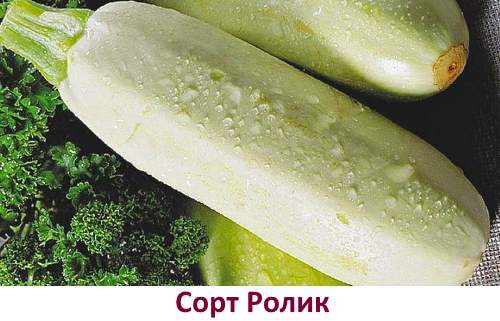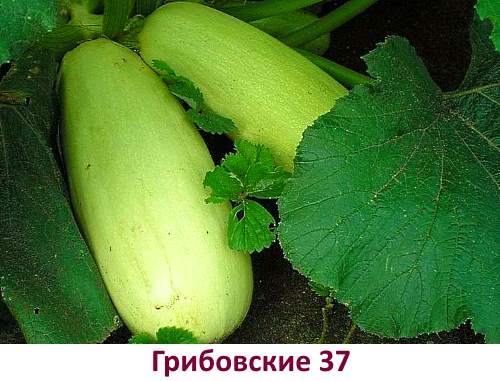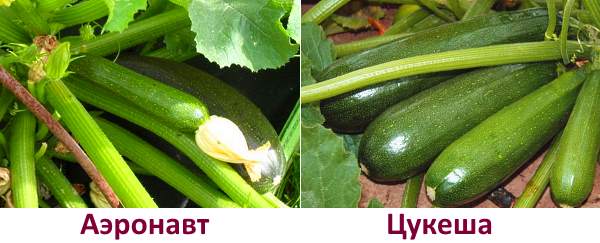What varieties of zucchini to choose for growing in the Urals and Siberia
Useful qualities of zucchini:
- Contains trace elements and vitamins necessary for the body;
- help cleanse the body of toxins and toxins;
- are a suitable product for baby and diet food;
- they have a long shelf life during which they retain their useful qualities.
These properties make the vegetable a must in every vegetable garden.
Today there are many varieties of zucchini and their hybrids with different ripening periods, which allows them to be grown throughout Russia, including in the Urals and Siberia. Fresh zucchini directly from the garden can be consumed from mid-summer to late autumn, choosing the right variety of vegetables in accordance with climatic conditions.
Although zucchini itself is a very early ripening vegetable and, with proper agricultural technology, you can get a good harvest beyond the Urals, using not only the seeds of zucchini for Siberia, but also many other domestic varieties. Our zucchini varieties are more suitable for the climate of the Urals and Siberia, since they are more adapted to these conditions, the choice of foreign varieties is more successful for the south of Russia, because they have a longer growing season.
The best varieties of zucchini for the Urals
The climatic conditions for growing zucchini in the Urals are quite favorable. Here they can be grown in seedlings or by sowing seeds in open ground.
Zucchini of the following varieties are recommended for the Urals:
- White Swan;
- Roller;
- Zebra;
- Aeronaut;
- Anchor;
- Gribovskie 37;
- Belogor F1;
- Tsukesha and many others.
All varieties, except for zucchini Gribovskie 37, are early maturing varieties. At the same time, the Roller zucchini is especially resistant to cold snaps and you can harvest the crop already 36 days after germination. Its bush is very compact and can be covered without difficulty if necessary.

Variety Gribovskie 37 is one of the most widespread and oldest varieties of marrow, it belongs to the mid-early, the first harvest can be expected after 50 days from germination. It gained popularity due to its resistance to diseases and the versatility of using the fruit.

Aeronaut, Tsukesha and Zebra are zucchini varieties. Their fruits have a smooth dark green surface and an oblong cylindrical shape. The average weight of such zucchini is up to 1.2 kg.


White Swan, Aeronaut and Belogor F1 are self-pollinating varieties, and Yakor zucchini are distinguished by high cold resistance and drought resistance.
Almost all domestic varieties of zucchini are suitable for the Urals. But if you think about which zucchini are the most productive in the Urals, then these are, of course, Apollo F1 and Bely.
 Zucchini of the Apollo F1 variety is early ripening, ripens in about 40 days, with amicable fruiting, cold-resistant and shade-tolerant variety. The fruits are light green in color with white dots. Fruit weight at technical maturity is about 1 kg, but can reach 3 kg. The flesh of these zucchini is white, dense, with good taste.
Zucchini of the Apollo F1 variety is early ripening, ripens in about 40 days, with amicable fruiting, cold-resistant and shade-tolerant variety. The fruits are light green in color with white dots. Fruit weight at technical maturity is about 1 kg, but can reach 3 kg. The flesh of these zucchini is white, dense, with good taste.
 Zucchini variety White refers to ultra-early ripening, its fruits are ready for consumption in 1 month. It is a cold-resistant variety, does not suffer from powdery mildew and does not suffer from gray rot. The fruit is of a classic shape, relatively small and with excellent taste.
Zucchini variety White refers to ultra-early ripening, its fruits are ready for consumption in 1 month. It is a cold-resistant variety, does not suffer from powdery mildew and does not suffer from gray rot. The fruit is of a classic shape, relatively small and with excellent taste.
To get a rich harvest, you need to know when to plant zucchini in the Urals. These plants are afraid of frost, so this should be done when the danger of a sharp cold snap disappears. In the Urals, this occurs at the beginning of June.To get a harvest in the middle of summer, you need plant zucchini with seedlings... Planting seedlings grown in separate cups... For later harvesting, zucchini can be sown with seeds in late May or early June. Seedlings should be covered at night at first.
If in doubt which sowing method to choose, and how to grow zucchini in the Urals, then choose seedling. It is more reliable in terms of the timing of the appearance of the fruit. If it is not possible to grow seedlings, then as soon as the soil warms up, sow with seeds, but on a high bed and under a film.
The best varieties of zucchini for Siberia
In a cold, rainy summer, some varieties of zucchini are damaged by fungal diseases and often even die, especially in the northern regions of Russia. But you can still grow zucchini in Siberia, as there are varieties adapted to such conditions. They give good yields even under conditions of short rainy summers.
To varieties suitable for growing in Siberia, in addition to the above described Gribovskie 37, Anchor and Rolik, you should add such as:
- Long-fruited;
- Pharaoh;
- White-fruited;
- Polar bear.
Zucchini varieties Dlinnoplodny belong to bush, have a compact shape. Its fruit is smooth, slightly ribbed at the base, with a cylindrical shape and thin bark. The mass of zucchini is up to 0.9 kg, and the pulp is tender, dense and with excellent taste. Due to the thin bark, it cannot be stored for a long time. The variety is resistant to bacteriosis.
 Pharaoh refers to zucchini. Zucchini of this variety are cold-resistant, high-yielding and early maturing. Fruits with a dark green color with light dots, weighing about 0.8 kg. At biological maturity, they are black-green. The pulp is juicy, tender, crispy, yellow. The plant is resistant to gray mold.
Pharaoh refers to zucchini. Zucchini of this variety are cold-resistant, high-yielding and early maturing. Fruits with a dark green color with light dots, weighing about 0.8 kg. At biological maturity, they are black-green. The pulp is juicy, tender, crispy, yellow. The plant is resistant to gray mold.
Zucchini Beloplodnye belong to early varieties, the first harvest can be obtained 40 days after germination. Suitable for canning and processing. The shrub plants of this squash have short side shoots, which allows them to be grown in small gardens. The fruits are cylindrical in shape, whitish in color and smooth surface, with creamy pulp, medium density. Weight up to 1 kg. The variety is resistant to disease.
The bush variety of zucchini Polar bear has a growing season of only 36 days; resistance to low temperatures is added to ultra-early maturity, which makes it a particularly suitable variety of zucchini for Siberia. The mass of oval smooth fruits is about 1.3 kg. The bark is thin, the flesh is tender, light in color. Zucchini has good keeping quality and tolerates transportation.

After choosing the right variety, the next important point is to make the right decision about when to plant zucchini in open ground in Siberia.
To obtain an early harvest of vegetables, seedlings of April sowing (second half of the month) are planted in open ground at the end of May or in the first days of June. It is advisable to do this in cloudy weather or shade the bed after planting seedlings.
In this case, cultivation takes place under cover or in a “tunnel” until about mid-June, that is, until the danger of frost disappears. "Warm" beds give good results.
Zucchini should be planted with seeds in Siberia at the same time, protecting the seedlings from possible frost - cover them with foil or cut plastic bottles at night and on cold days.